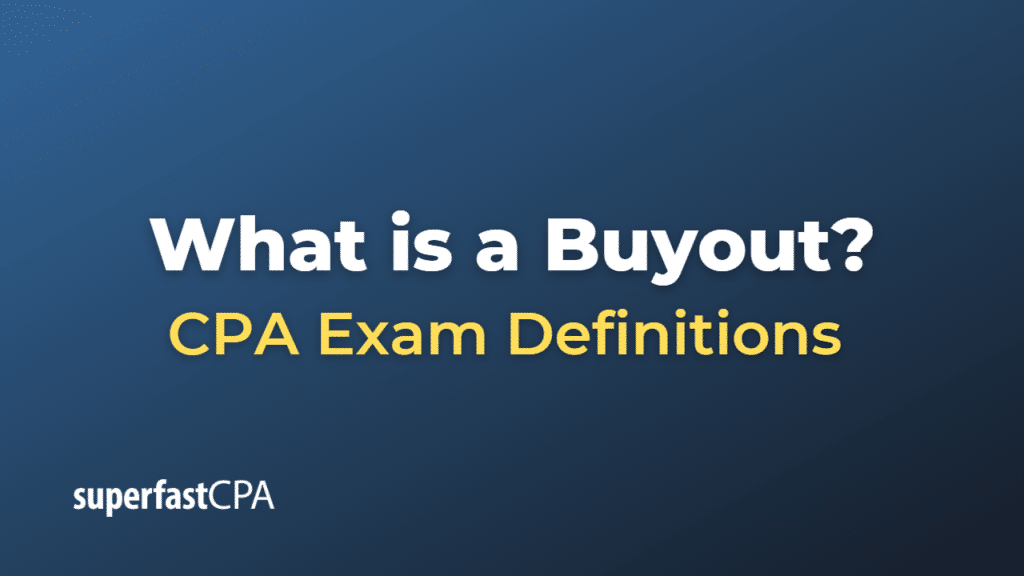Buyout
A buyout refers to the acquisition of a controlling interest in a company or a significant portion of a company’s ownership, typically through the purchase of its shares or assets. Buyouts can occur in various forms, such as management buyouts, leveraged buyouts, and employee buyouts.
- Management buyout (MBO): In an MBO, a company’s management team purchases a controlling stake in the company. This usually happens when the existing owners want to retire or when a parent company wants to sell a subsidiary. The management team, already familiar with the company’s operations, believes they can run it more effectively and profitably as owners.
- Leveraged buyout (LBO): An LBO occurs when an investor or a group of investors acquires a controlling stake in a company using a significant amount of borrowed funds. The acquired company’s assets are often used as collateral for the loans. The intention is to improve the company’s performance, pay down the debt, and eventually sell the company at a profit or take it public.
- Employee buyout (EBO): In an EBO, a company’s employees acquire ownership, often through an employee stock ownership plan (ESOP) or by purchasing shares directly. This can occur when a company’s owner wants to retire or sell the business, or when employees believe that they can run the company more effectively as owners. EBOs can also be used to motivate and reward employees or as part of a company’s succession plan.
Example of a Buyout
Let’s consider an example of a leveraged buyout (LBO):
Suppose Company A is a private equity firm that specializes in acquiring underperforming companies, improving their operations, and selling them for a profit. Company A identifies Company B, a medium-sized manufacturing firm, as a potential acquisition target. Company B has been struggling due to inefficient operations and poor management, but Company A believes that with the right restructuring and leadership, Company B can become highly profitable.
Company A decides to pursue a leveraged buyout of Company B. To finance the acquisition, Company A uses a mix of its own equity capital and a significant amount of borrowed funds. Company A acquires a controlling stake in Company B by purchasing 75% of its shares for $100 million, with $30 million from its own funds and $70 million from a loan. Company B’s assets are used as collateral for the loan.
After acquiring Company B, Company A brings in a new management team, streamlines operations, and implements cost-cutting measures. As a result, Company B’s profitability increases significantly over the next few years. The increased cash flow allows Company A to pay down the debt it took on for the acquisition. Eventually, Company A decides to sell its stake in Company B for $200 million, making a substantial profit on its initial investment.
This example illustrates how a leveraged buyout can work, with the acquirer using borrowed funds to purchase a controlling interest in a company, improving its operations, and ultimately profiting from the increased value of the acquired business.













